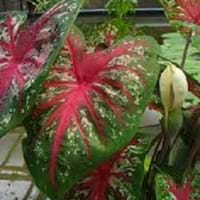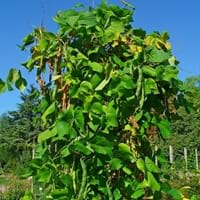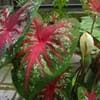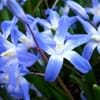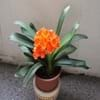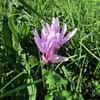Life Span
Annual and Perennial
Perennial
Type
Tender Perennial
Vegetable
Origin
Southern Europe, Mediterranean
Central America
Types
Not Available
Not Available
Habitat
gardens, Grassland, Prairies, tropical environments, Tropical regions
Fields, orchards
USDA Hardiness Zone
7-9
8-11
Sunset Zone
4, 5, 6, 14, 15, 16, 17, 18, 19, 20, 21, 22, 23, 24
A1, A2, A3, H1, H2, 1a, 1b, 2a, 2b, 3a, 3b, 4, 5, 6, 7, 8, 9, 10, 11, 12, 13, 14, 15, 16, 17, 18, 19, 20, 21, 22, 23, 24
Habit
Mat-forming
Vining/Climbing
Minimum Width
Not Available
Flower Color
White, Green
White, Red, Crimson
Flower Color Modifier
Bicolor
Bicolor
Fruit Color
Green
Green, Tan, Brown
Leaf Color in Spring
Gray Green
Green, Dark Green
Leaf Color in Summer
Gray Green
Green, Dark Green
Leaf Color in Fall
Gray Green
Green, Dark Green
Leaf Color in Winter
Light Green
Green, Dark Green
Leaf Shape
Linear
Maple shaped
Plant Season
Spring, Summer, Fall, Winter
Spring, Summer, Fall, Winter
Sunlight
Full Sun, Partial Sun
Full Sun, Partial Sun
Type of Soil
Loam, Sand
Clay, Loam, Sand
The pH of Soil
Neutral, Alkaline
Neutral
Soil Drainage
Well drained
Well drained
Bloom Time
Spring, Late Spring, Early Summer, Summer, Late Summer, Early Fall
Indeterminate
Tolerances
Drought
Drought
Where to Plant?
Container, Ground, Pot
Container, Ground
How to Plant?
Seedlings, Stem Cutting
Seedlings
Plant Maintenance
Medium
Medium
Watering Requirements
Allow soil to be completely dry in between waterings, Water Deeply, Water less during winter
Do not let dry out between waterings, Use Mulches to help prevent water loss during hot and windy weather
In Summer
Lots of watering
Lots of watering
In Spring
Moderate
Moderate
In Winter
Average Water
Average Water
Soil pH
Neutral, Alkaline
Neutral
Soil Type
Loam, Sand
Clay, Loam, Sand
Soil Drainage Capacity
Well drained
Well drained
Sun Exposure
Full Sun, Partial Sun
Full Sun, Partial Sun
Pruning
Cut or pinch the stems, Do not prune during shooting season, Prune if you want to improve plant shape, Prune prior to new growth, Remove deadheads
Remove damaged leaves, Remove dead branches, Remove dead leaves
Fertilizers
No fertilizers needed
All-Purpose Liquid Fertilizer
Pests and Diseases
fungus, Insects, Red blotch
Red blotch
Plant Tolerance
Drought
Drought
Flower Petal Number
Single
Single
Foliage Texture
Fine
Medium
Foliage Sheen
Matte
Matte
Attracts
Bees, Birds, Butterflies
Hummingbirds
Allergy
Skin irritation
Diarrhea, Irritation to stomach
Aesthetic Uses
Beautification, Showy Purposes
Not Used For Aesthetic Purpose
Beauty Benefits
Not Available
Making cosmetics, Remove blemishes
Environmental Uses
Air purification
Air purification
Medicinal Uses
No Medicinal Use
Acne, Diuretic, Emmoiliant, Menstrual Disorders
Part of Plant Used
Whole plant
Fruits
Other Uses
Showy Purposes
Animal Feed, Used as a nutritious food item
Used As Indoor Plant
No
Yes
Used As Outdoor Plant
Yes
Yes
Garden Design
Alpine, Container, Edging, Foundation, Groundcover, Mixed Border, Rock Garden / Wall
Edible, Herb, Vegetable, Mixed Border, Tropical, Vine
Botanical Name
CALADIUM 'Aaron'
PHASEOLUS coccineus
Common Name
Aaron Caladium, Angel Wings, Fancy-leaved Caladium
Runner bean, Multiflora bean
In Hindi
Aaron Caladium
Scarlet Runner Bean
In German
Aaron Caladium
Feuerbohne
In French
Aaron Caladium
Haricot d'Espagne
In Spanish
Aaron Caladium
Ayocote
In Greek
Aaron τροπικό φυτό
Scarlet Runner Bean
In Portuguese
Aaron Caladium
Feijão-da-espanha
In Polish
Aaron Caladium
Bean
In Latin
Aaron Caladium
Scarlet Runner Bean
Phylum
Tracheophyta
Spermatophyta
Class
Liliopsida
Magnoliopsida
Order
Alismatales
Fagales
Clade
Angiosperms, Monocots
Angiosperms, Eudicots, Rosids
Tribe
Not Available
Phaseoleae
Subfamily
Aroideae
Faboideae
Number of Species
Not Available
Not Available
Season and Care of Aaron Caladium and Scarlet Runner Bean
Season and care of Aaron Caladium and Scarlet Runner Bean is important to know. While considering everything about Aaron Caladium and Scarlet Runner Bean Care, growing season is an essential factor. Aaron Caladium season is Spring, Summer, Fall and Winter and Scarlet Runner Bean season is Spring, Summer, Fall and Winter. The type of soil for Aaron Caladium is Loam, Sand and for Scarlet Runner Bean is Clay, Loam, Sand while the PH of soil for Aaron Caladium is Neutral, Alkaline and for Scarlet Runner Bean is Neutral.
Aaron Caladium and Scarlet Runner Bean Physical Information
Aaron Caladium and Scarlet Runner Bean physical information is very important for comparison. Aaron Caladium height is 30.50 cm and width 30.50 cm whereas Scarlet Runner Bean height is 180.00 cm and width Not Available. The color specification of Aaron Caladium and Scarlet Runner Bean are as follows:
Aaron Caladium flower color: White and Green
Aaron Caladium leaf color: Gray Green
Scarlet Runner Bean flower color: White, Red and Crimson
- Scarlet Runner Bean leaf color: Green and Dark Green
Care of Aaron Caladium and Scarlet Runner Bean
Care of Aaron Caladium and Scarlet Runner Bean include pruning, fertilizers, watering etc. Aaron Caladium pruning is done Cut or pinch the stems, Do not prune during shooting season, Prune if you want to improve plant shape, Prune prior to new growth and Remove deadheads and Scarlet Runner Bean pruning is done Remove damaged leaves, Remove dead branches and Remove dead leaves. In summer Aaron Caladium needs Lots of watering and in winter, it needs Average Water. Whereas, in summer Scarlet Runner Bean needs Lots of watering and in winter, it needs Average Water.
